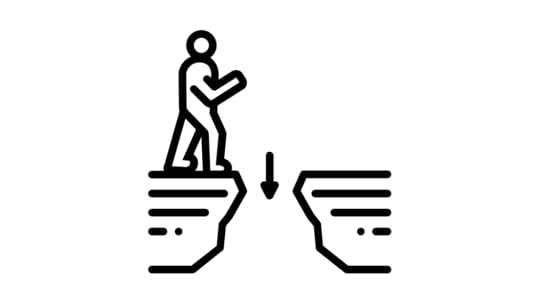Sell Low

Sell Low: Actual Decision-Makers and When NOT to Sell to the C-Suite
The
drumbeat from the sales experts has always been the same: Sell High.
Always
sell to the decision-maker. Don’t waste your time with anyone else. Talk to the
CEO and tell her that you want to create a “partnership” between your two
companies. Make her understand how strategically important your products are to
her company.
However,
most of what you’ve read on this topic is just wrong. In order to maximize your
sales productivity you need to do the opposite and focus your sales efforts on
the lowest responsible level within your customer’s organization.
The
universe of writing about sales extols the requirement to penetrate the C-suite
to successfully sell a product or service.
Definition: The C-suite is the
inclusive label for the CEO and everyone else at the vice-president level.
However–and
this is very important–for the vast majority of products and services being
sold, this assumption will just waste your valuable selling time. And, possibly
annoy the customer.
Here’s
why in most cases your product is not strategic enough to the customer to
warrant the type of partner relationship so often touted in sales training
venues.
What
a customer wants is not a partner, but a great vendor: one who will be
absolutely responsive to their questions and requests, and who will provide
unconditional support at every given opportunity. So in selling your product,
you need to target the person most qualified to ask those questions. Rather
than selling high, you need to sell low.
Selling
low means selling your product to the lowest-level responsible person(s) within
your customer’s organization: the person who will actually make the decision of
which specific product or service to purchase. Selling low is a technical step
that requires some careful, brutally honest self-assessment to implement
successfully.
The cold hard truth is that well over
90% of all products and services sold in a B2B environment do not require
C-level approval for purchase.
Let’s
take a small manufacturing company that produces $50 million a year in revenue.
How many purchases does this company make every year? It will easily number in
the thousands of transactions. Consider everything they need to keep their
business running, from paper clips to janitorial service to phones to software
to raw materials, and much more. What percentage of those purchase decisions
will be made by the CEO? Or by one of the executives? Very few will be worth
spending their valuable time on.

The Actual Decision-Makers
In
most companies, the people who typically decide whether to buy your product or
service are the functional employees who will use it on a regular basis. They
are the individuals or team who create the specifications or requirements for
the products they use. They often are the people who take your product out of
its box, plug it in, power it up, and call you if it doesn’t work. These are
the people whom the higher-ups depend on to do product research, evaluate the
alternatives, and make the decision to buy either your product or your
competitor’s. These are your Actual Decision-Makers. (Let’s call them the
ADMs). They are the people you want to sell to.
Internal Advocate
Why
focus on the ADMs?
First,
it is much easier and quicker to get to this person.
Second,
the ADM will respond to being poked by the sharp end of the stick. They don’t
want to waste time with someone who can’t answer questions and provide
information in Zero Time. The customer will want to accomplish the task of purchasing
your product or service as urgently as you want to get the order. Third, the
relationship with the ADM will be built on performance and support. If they
don’t like your product, your company, or you, then you won’t get the order.
There
are two places to start looking for the ADM. First, who contacted your company
about your product and service? Who in their organization made the phone call
or sent the first email? If the sales opportunity came about through an
in-bound lead, then the chances are reasonably good that the person who
contacted you is the ADM.
Second,
who is the actual user or consumer of your products and services within the
purchasing organization? The person who will be using your product day in and
day out will carry the most raw weight when decisions are made. Is that person
also the Actual Decision-Maker? This will require a little investigation by
your salesperson.

The Boss
The
Boss is the lowest-level person in your prospect’s organization who can
authorize the purchase of your product or service. This could be the ADM, or a
functional manager in your ADM’s department, or it could be someone in
purchasing with the authority to bind the company. Or it could be the CEO of an
SMB.
The
Boss is the highest level that your team should sell to within the customer
organization. After all, why go any higher? Why should your sales team spend
their limited time chasing after the boss of the boss of the guy who is signing
the PO? In most organizations the Boss will defer to the judgment of those who
work for him or her.
Of
course, they care that the company is buying the right product at a good price.
But at the end of the day, they usually don’t care whether the ADM chose
Company A or Company B, as long as the customer company has an approved vendor
list and both Company A and Company B are on it. If the customer doesn’t have
such procedures in place, then the Boss may need some attention and assurance
from you that your local firm, Widgets & Things, sells a good product.
Otherwise, don’t worry about the Boss. Just focus on the ADM.

Avoid The Gap
If
a seller attempts to oversell a product, going to a C-suite executive, they
will fall into the gap: a time-wasting disconnect between the executive and the
ADM. When you do this, you add unnecessary risk to your sales efforts.
First,
you get the executive involved with a decision he doesn’t have to make. While
you’re trying to get his attention, your competitor is selling straight to the
ADM and locking down a deal. Second, if you succeed in getting the executive’s
attention, then instead of putting the decision in the hands of the ADM, you’ve
pushed it up the ladder to an executive who may not view your product as
favorably as the ADM.
If
you’ve been working with the ADM and have secured his commitment to make the
purchase from you, then you need to take a deep breath and do nothing. It is
always a stressful time for the seller, when the ADM says that he has submitted
the purchase requisition to the Boss for approval. You need to resist the
temptation, or the urging of your management, to jump in and check with the
Boss on the status of your PO. If you do this, you risk falling into the gap.
There
is a time gap between levels of management, just as there is between the ADM
and the Boss. If the ADM says the PO will issue in five days, schedule a
follow-up in your CRM system to call him in three days. Keep in mind that the
ADM, having made a decision and passed it up the chain for sign-off, is at
least as eager as you are to be done with the whole sell/buy process and get
back to important work.
The
time gap between each level of management should be presumed to be at least a
week. It could be longer. If there are two levels of management between the ADM
and the Boss, then you risk injecting another two weeks into the buying cycle
if you attempt to involve the Boss in a decision that she was content to leave
to her staff. This creates time for your competition to get back into the deal.
Falling into the gap puts the brakes on Zero-Time Selling and injects an
element of risk into the sales situation that didn’t exist before.
The
gap swallows up too many sellers. They try to jump over it, in order to
influence the actions of the Boss. What they fail to keep in mind is that the
Boss is usually just being asked to sign a piece of paper that authorizes a
decision, not to make the decision herself. If you try to deal with the Boss as
a decision-maker, you’ll only open the door to questions you’ve already
answered, or that didn’t need to be asked. This will defeat the momentum of
Zero Time and risk opening up the buying process again.
Effective Zero-Time Selling requires you to be
realistic about the perceived value of the product you are selling to your
customer. Not every product a company buys merits a partnership with the
seller. Sometimes a vendor is just that. This doesn’t mean the customer doesn’t
value his relationship with your company or that he doesn’t appreciate the
great customer service you provide without asking. Sell a great product with
great support, and you will be rewarded with orders. Just don’t waste time
selling to people who don’t have the time to care.
Andy Paul's Blog
- Andy Paul's profile
- 4 followers



